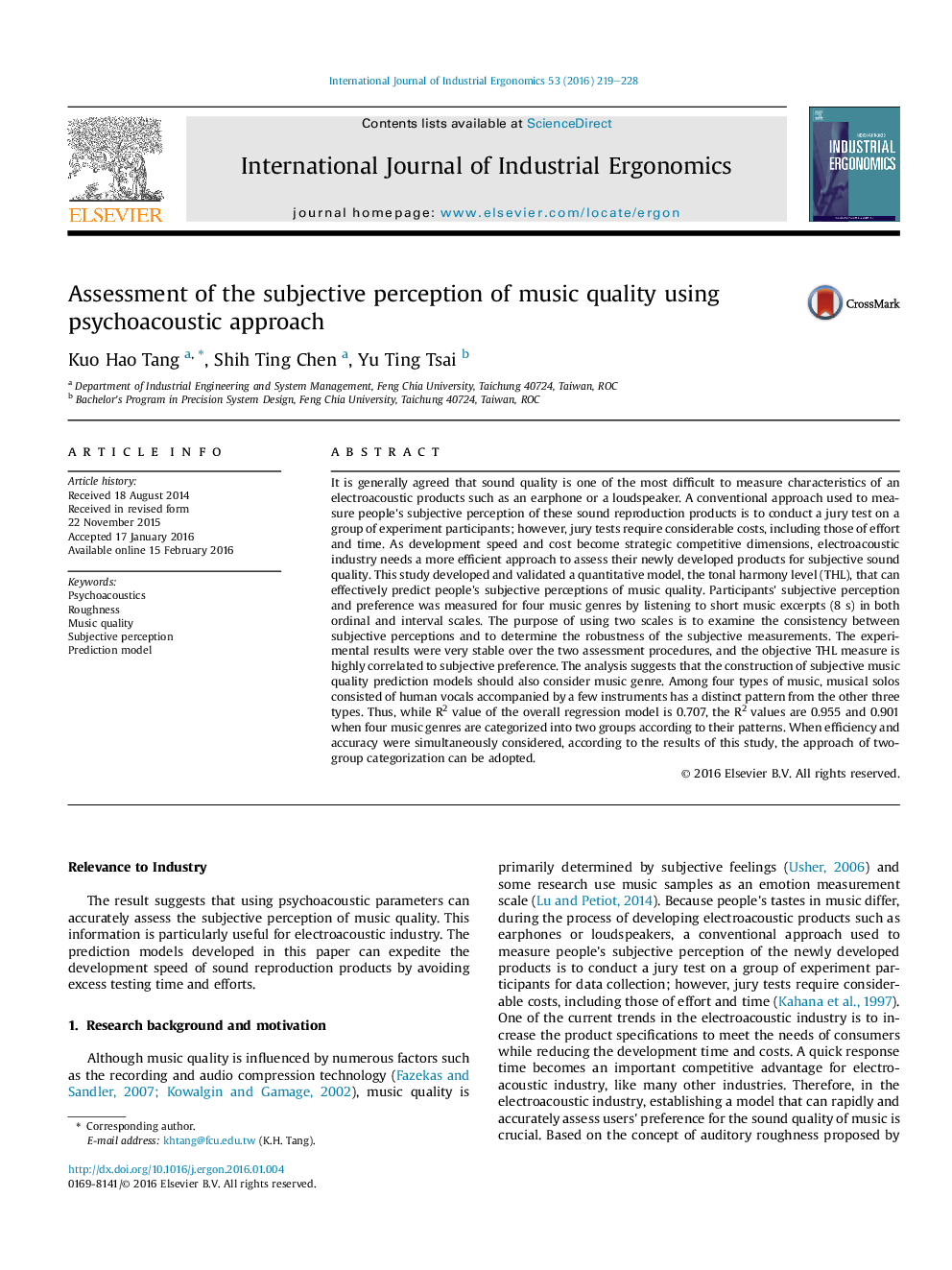| Article ID | Journal | Published Year | Pages | File Type |
|---|---|---|---|---|
| 1095822 | International Journal of Industrial Ergonomics | 2016 | 10 Pages |
•We use acoustics roughness to build prediction model for perception of music quality.•Preference was measured in both ordinal and interval scales to ensure robustness.•A broad range of music genres can be categorized into two groups for model building.•Measured acoustics roughness can accurately predict subjective preference.
It is generally agreed that sound quality is one of the most difficult to measure characteristics of an electroacoustic products such as an earphone or a loudspeaker. A conventional approach used to measure people's subjective perception of these sound reproduction products is to conduct a jury test on a group of experiment participants; however, jury tests require considerable costs, including those of effort and time. As development speed and cost become strategic competitive dimensions, electroacoustic industry needs a more efficient approach to assess their newly developed products for subjective sound quality. This study developed and validated a quantitative model, the tonal harmony level (THL), that can effectively predict people's subjective perceptions of music quality. Participants' subjective perception and preference was measured for four music genres by listening to short music excerpts (8 s) in both ordinal and interval scales. The purpose of using two scales is to examine the consistency between subjective perceptions and to determine the robustness of the subjective measurements. The experimental results were very stable over the two assessment procedures, and the objective THL measure is highly correlated to subjective preference. The analysis suggests that the construction of subjective music quality prediction models should also consider music genre. Among four types of music, musical solos consisted of human vocals accompanied by a few instruments has a distinct pattern from the other three types. Thus, while R2 value of the overall regression model is 0.707, the R2 values are 0.955 and 0.901 when four music genres are categorized into two groups according to their patterns. When efficiency and accuracy were simultaneously considered, according to the results of this study, the approach of two-group categorization can be adopted.
